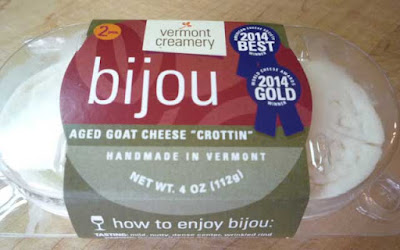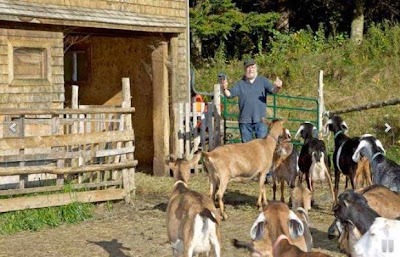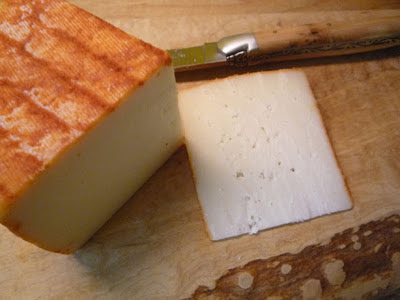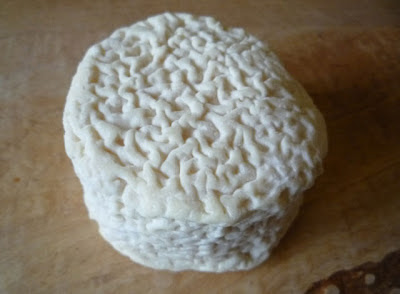Bijou is an
exquisite, little, soft-ripened, pasteurised goat-milk cheese produced by Vermont Creamery located in
Websterville, Vermont.
Bijou, which
means "Jewel" in French, is quite the fitting name for this tiny
little cheese that embodies all that is unique in the making and caring of a
small 'crottin type' goat-milk cheese.
Bijou is made
with fresh pasteurised goat-milk which is supplied to Vermont Creamery by 20 family
goat farms. The curd coagulates overnight, drains in cheese-cloths and then
shaped into little cylinder buttons. Bijou is then dried and matured for 1 week
before being packaged for retail. Each container which is designed to promote ripening
contains 2 Bijou cheese crottins. Each Bijou weighs 2 oz.(57 grams) and
measures approx. 1 1/2 inch (4 cm) in diameter and 1 1/4 inch (3.5 cm) in
height. Bijou like 'crottin type' cheeses evolves with time, gaining in
sharpness and complexity as it reaches an ideal maturity at 30 days.
Bijou is an award winning chèvre for Vermont Creamery. It has received the 1st Place position in the category of American made International style goat cheese at both the 2014 and the 2015 American Cheese Society competitions. Bijou also received the Gold medal at the 2014 World Cheese Awards.
Bijou has a lovely wrinkly, cream coloured, geotrichum-rind and a milk-white soft paste that is denser in the middle and creamier on the outside. Bijou has a wonderful sweet and yeasty taste & aroma due to the geo-rind. It has a smooth, rich and creamy texture with a robust tangy flavour with hints of hazelnuts.
Bijou is quite
a versatile cheese it can be served as a creamy spreadable goat when young, toasted
on a baguette with a salad for a traditional French chèvre-chaud or it can
stand on its own on any cheese platter. Bijou pairs nicely with complex
aromatic white wines such as an Alsace Gewürztraminer or try it with a Belgium
Tripel beer with complex aromas and flavours.
Vermont Creamery has been
making cream, fine butter, fresh and aged cheeses for over 30 years. Their fine
products have won them over 100 various national and international awards.
Read my review on one of their other award winning goat cheese Bonne Bouche.
Vermont Creamery has
invested in the future of goat farming by creating a sustainable goat dairy in
Randolph Vermont. Ayers Brook Goat Farm
is being set up as a teaching venue for future farmers and current farmers
across the United States, a place where they can come and learn good animal management and to help encourage the growth of the goat
dairy industry in Vermont.












































